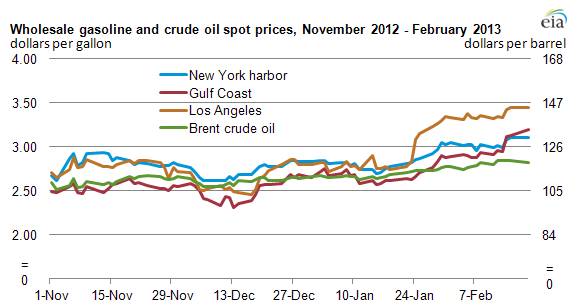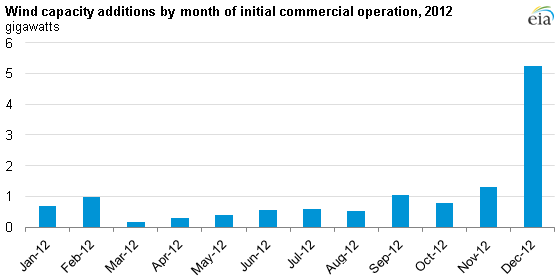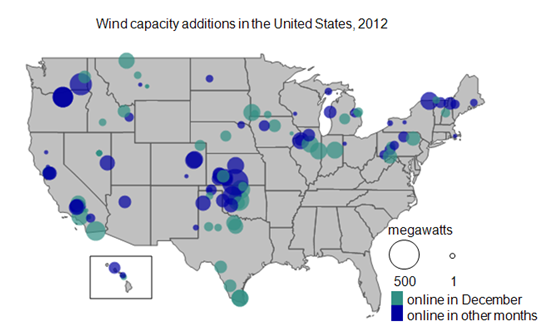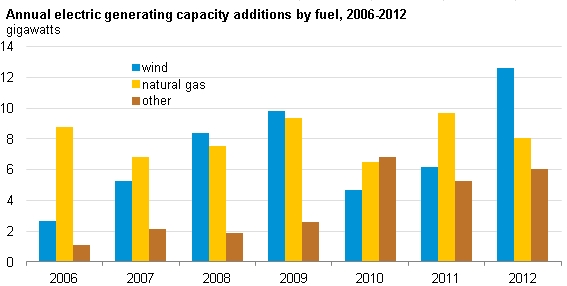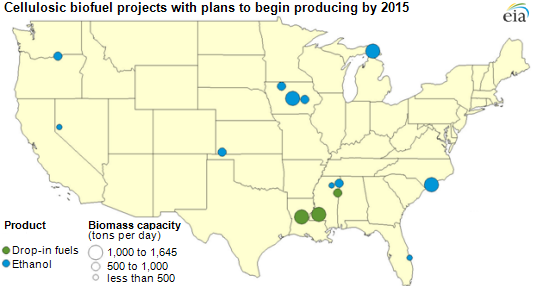
Several companies combined to produce about 20,000 gallons of fuels using cellulosic biomass (e.g., wood waste, sugarcane bagasse) from commercial-scale facilities in late 2012. EIA estimates this output could grow to more than 5 million gallons in 2013, as operations ramp up at several plants. Additionally, several more plants with proposed aggregate nameplate capacity of around 250 million gallons could begin production by 2015 (see map).
Although cellulosic biofuels volumes are expected to grow significantly relative to current levels, they will likely remain well below the targets envisioned in the Energy Independence and Security Act of 2007. That law set a target level of 500 million gallons of cellulosic biofuels for 2012 and 1 billion gallons for 2013, growing to 16 billion gallons by 2022.
The projects identified on the map above were designed to produce ethanol or drop-in biofuels (i.e., fuels that are direct replacements for petroleum-based gasoline or distillate fuels) as well as steam. Using technology known as combined heat and power, this steam can both be consumed internally as a process-heat source and used to generate power. The power can also be used internally to operate pumps and other electrical equipment or sold to the electrical grid, giving these projects the potential to consume no fossil fuels.
A number of the projects shown on the map may also generate a solid co-product with the potential for use as a fertilizer. To the extent that feedstock for these processes are waste products and little-to-no fossil inputs are required for their conversion, greenhouse gas emissions could be as much as 80% to 90% below those of petroleum products on a life-cycle basis. (DOE-EIA)




